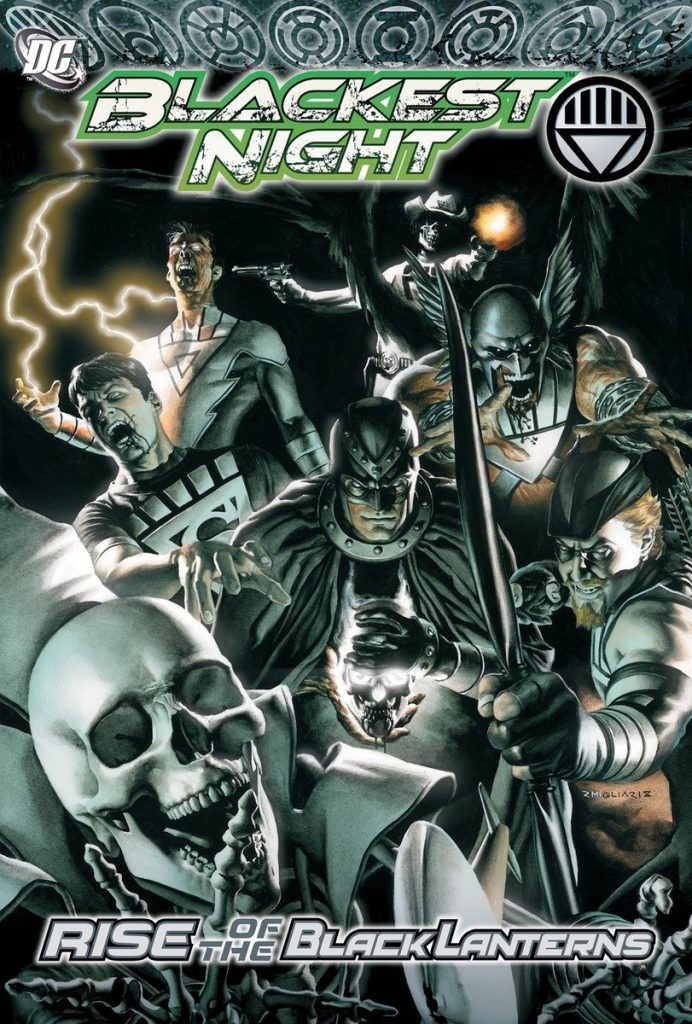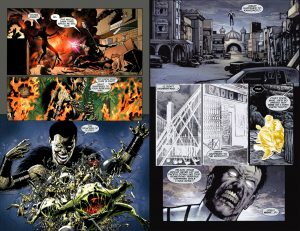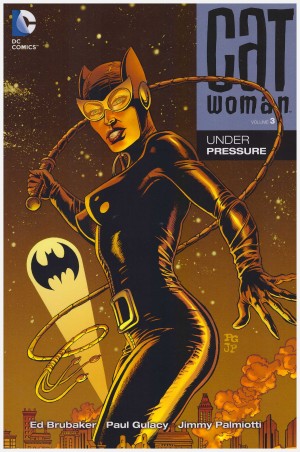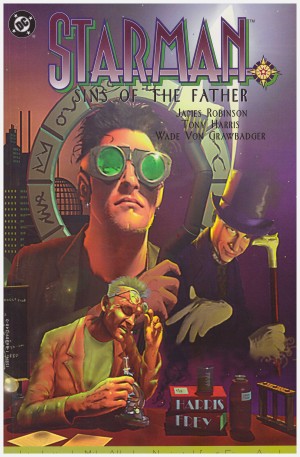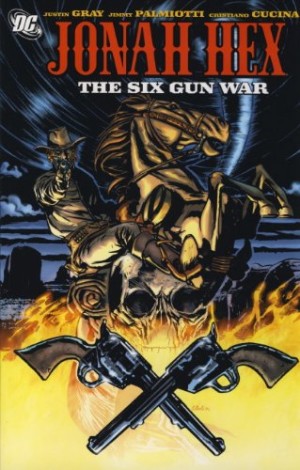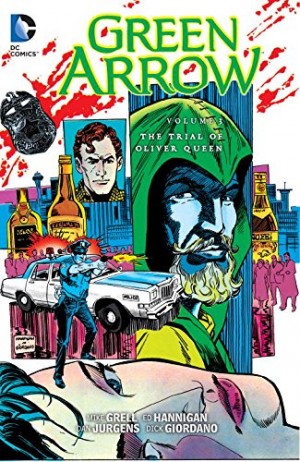Review by Karl Verhoven
To coincide with their Blackest Night event in 2010, DC published new issues of long cancelled titles. As the theme of Blackest Night was heroes and villains returning from the grave, applying it in a meta sense to dead comics was an amusing novelty.
In principle at least, an interesting selection are collected, from features cancelled in living memory like Catwoman, Shazam! and Starman, to Atom and Hawkman, Weird Western and Phantom Stranger, cancelled in the 1960s and 1970s. Each of the older features has a present day story tying into the core Blackest Night to a greater or lesser extent, with Geoff Johns using the Atom and Hawkman chapter to introduce a fundamental piece of the jigsaw. It features nice Ryan Sook art as well (sample spread left). Peter J. Tomasi and Ardian Syaf’s story similarly looks at an important player via the Phantom Stranger, although that’s not as much fun. For the Weird Western segment Dan Didio and Renato Arlem revive DC’s gunslingers in the present day along with a black sense of humour. “Sorry boy, but this just ain’t yo’ day” Jonah Hex informs a villain, and it’s great, but too much else is ordinary. We want the Western characters, not a plot about modern day heartless corporate scum.
In most cases creative teams go with the idea of the returned character causing chaos, and stories moving beyond that possess the greatest resonance. Tony Bedard focuses on the residue of Connor Kent’s genuine personality suppressed beneath the evil doppelganger that’s returned to battle Wonder Girl. It’s smart, with a clever solution, but diminished by Travis Moore’s unimaginative art. J. T. Krul takes the same approach with Green Arrow, but in a more adult way, focusing on his relationship with Black Canary and with Shado, drawn by Diogenes Neves with all the squirming permitted by the Comics Code in 2010. That’s an emotional wringer. Bedard’s Catwoman is intended as such, and it’s inventive, but never achieves the intended resonance as he overwrites, producing melodrama. It’s nice to see Harley Quinn and Poison Ivy involved, the revived Black Mask meets an appropriately gruesome fate, and Bedard’s use of a supporting character would be well played out if more subtle.
Of all the revivals it’s James Robinson back on Starman that offers the most promise. An always intelligent series, Robinson’s smart enough not to sully it by bringing back Jack Knight, so we have brother David confronting the Shade, himself experiencing a crisis. There’s some spirit, and it’s better than most of the remaining stories, but it’s Robinson on autopilot with no real feeling for the idea. Fernando Dagnino’s art is a contrast, sometimes innovatively laid out, other pages scratchy and unclear. The same applies to Denys Cowan whose style has become ever more abstracted, and while Denny O’Neil and Geoff Johns’ plot is true to what the Question was, the awkward mixture of philosophy and violence isn’t much fun despite a neat trick at the end.
Eric Wallace’s Shazam! chapter stands apart in reviving Osiris, but having him conflicted, his basic better nature overcoming the evil that’s supposed to be within. It’s interesting up to a point, and Don Kramer’s blocky art works well for zombies (sample spread right), but interest in the soul searching rapidly tires.
At the heart of each story is the conundrum of how to stop a powerful undead being able to reconfigure itself, and the solutions are innovative, but as a collection this is marginal. If preferred, it’s also available within the Blackest Night Omnibus along with some longer Black Lantern tales.
